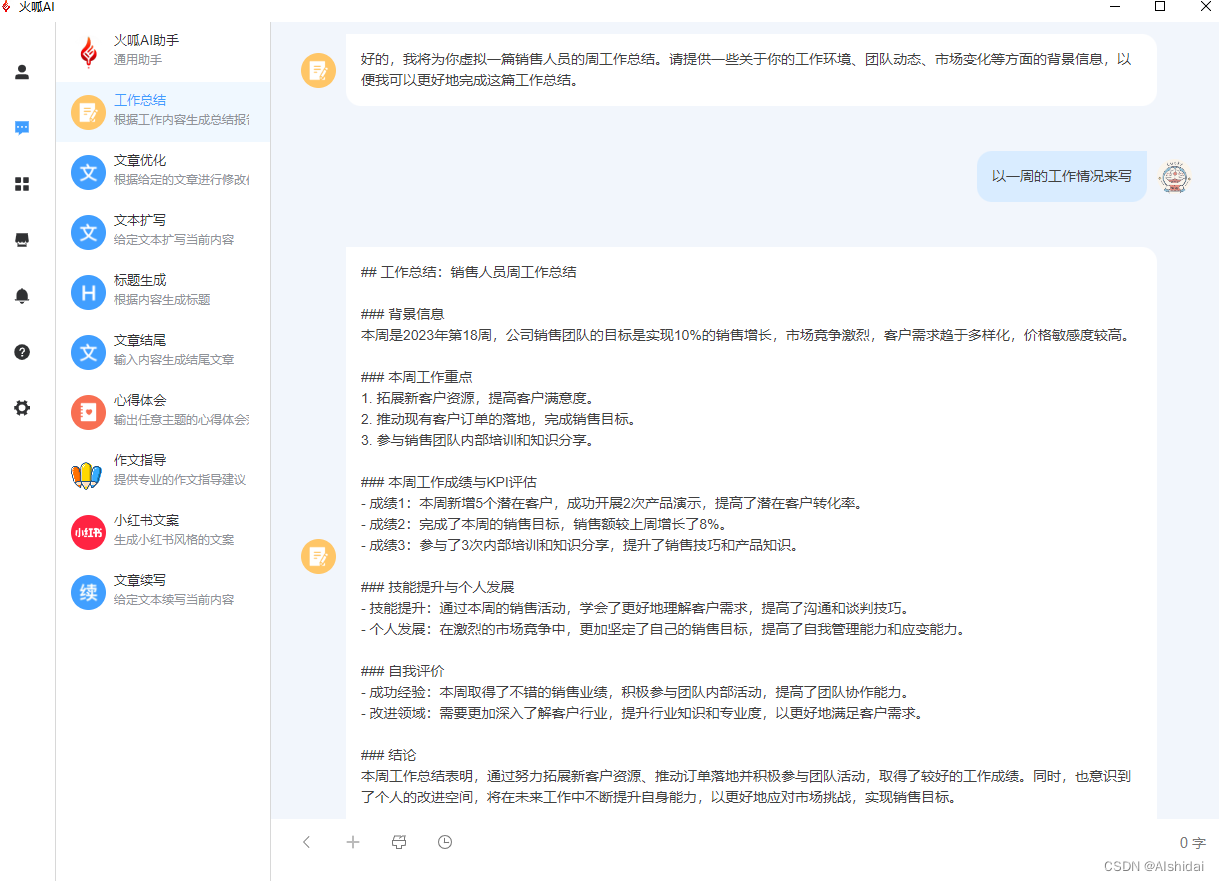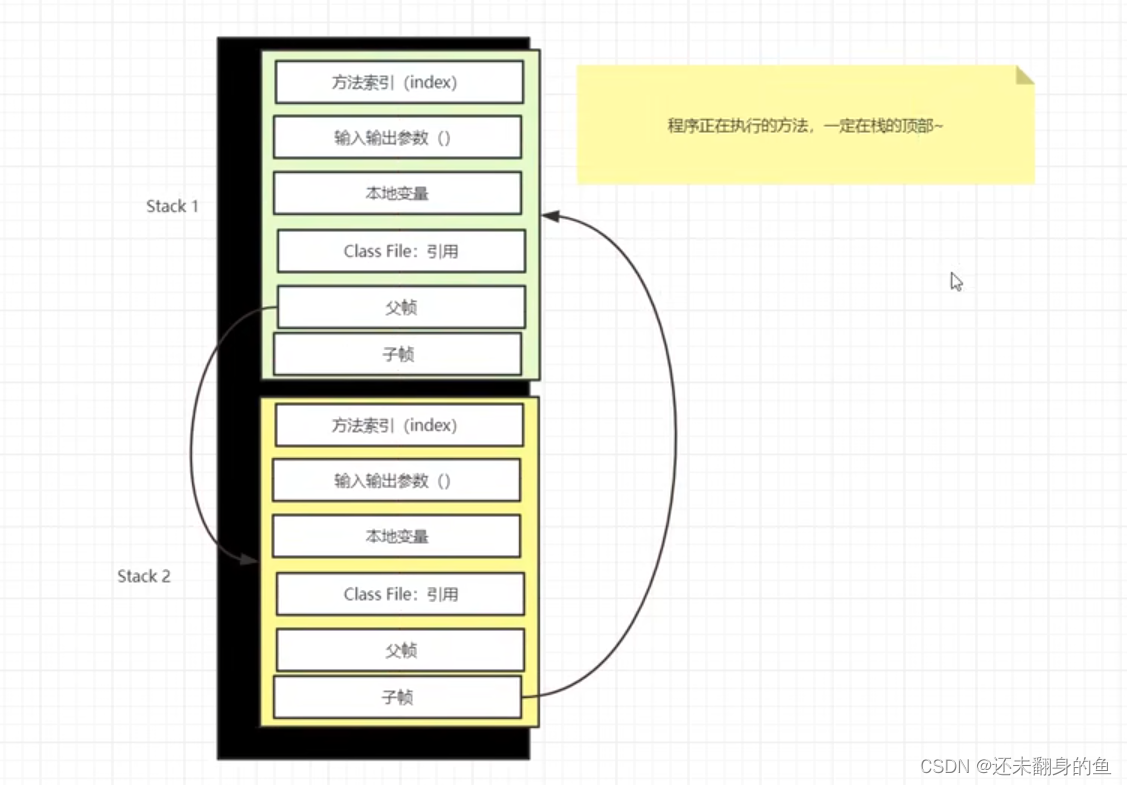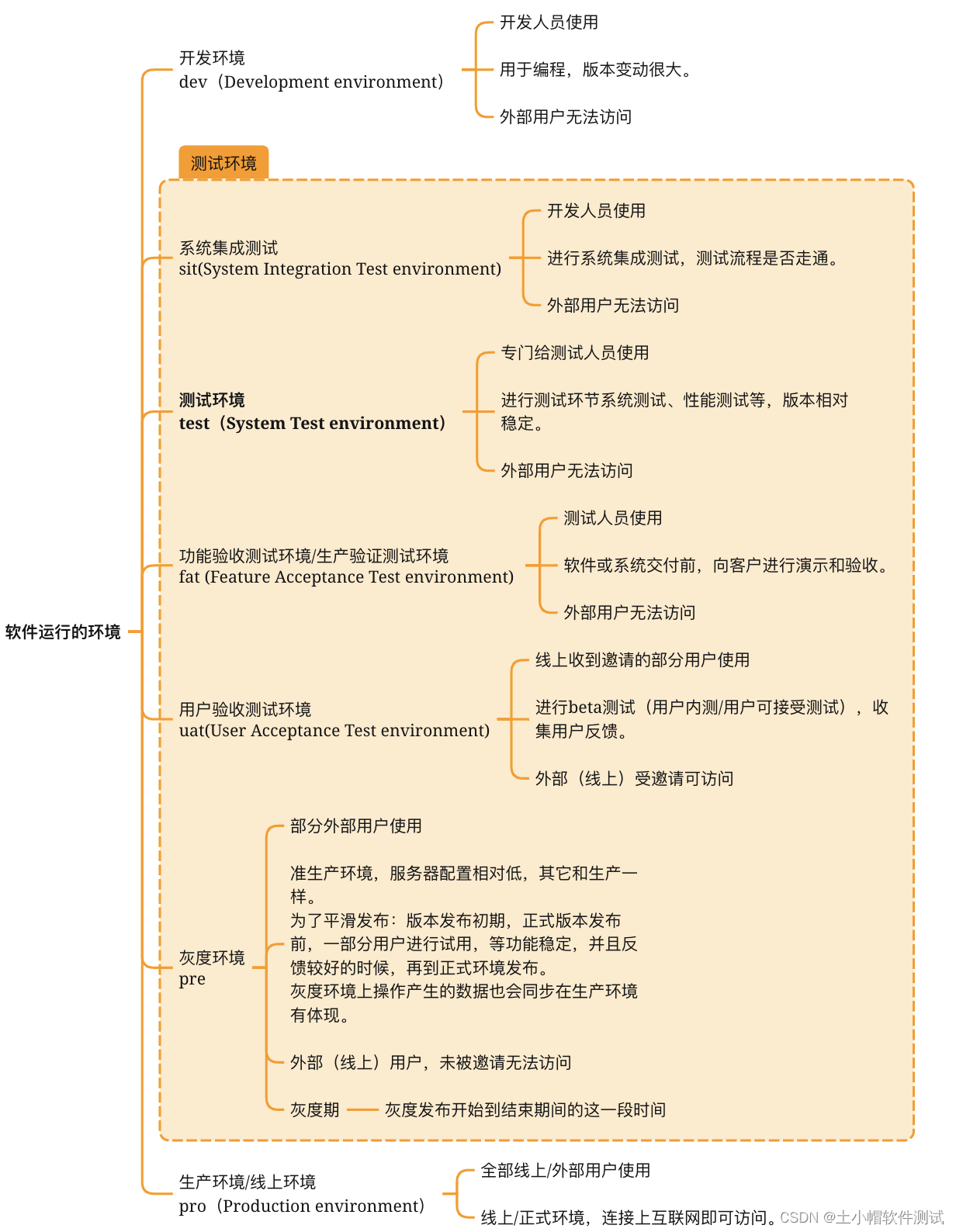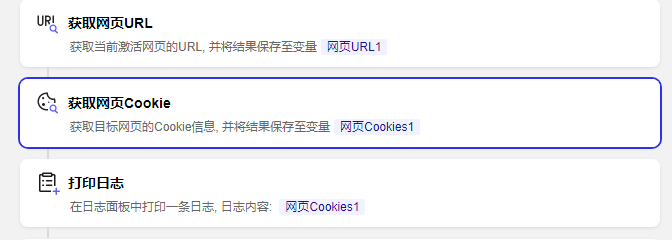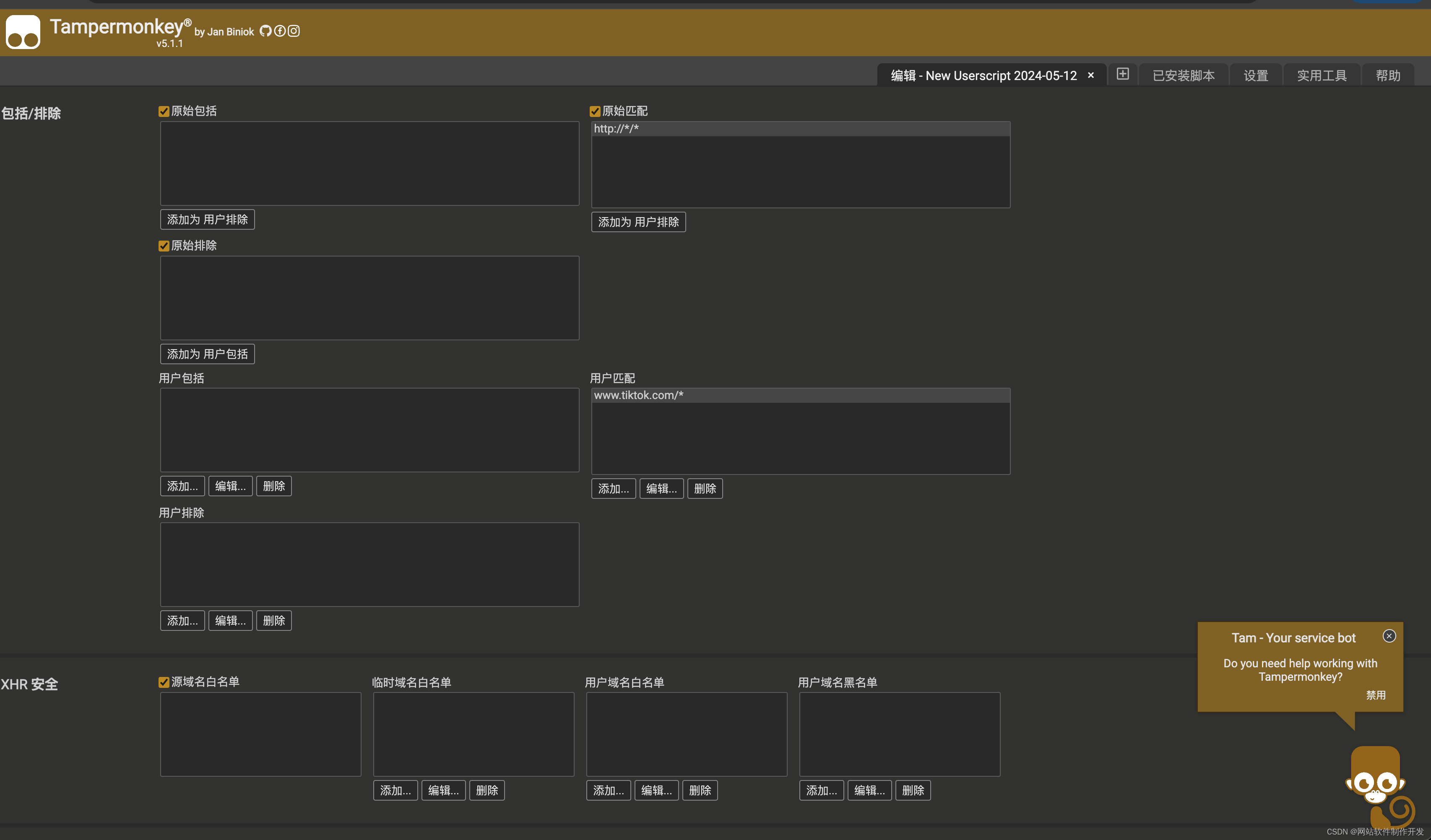
文章目录
- 简介
- 架构
- 预备条件
- 资源规划
- 基础配置
- 配置网卡
- 配置 hosts
- 安装常用软件
- 配置互信
- 安装 ansible
- 配置 hosts
- 关闭 swap
- selinux
- 防火墙
- 文件句柄数
- 配置内核参数
- 日志
- 主机配置代理
- 安装 containerd
- 方法1. 适用于rocky-8.9-x86_64-dvd1.iso
- 方法2 适用于 rocky-8.9-x86_64-minimal.iso
- 容器配置代理(可选)
- 安装 kubernetes
- 网络 calico
- 添加 worker node
- 设置角色
简介
kubeadm 是 Kubernetes 官方提供的一个工具,旨在简化和加速 Kubernetes 集群的安装和配置过程。作为一个强大且易于使用的安装工具,kubeadm 帮助用户快速建立一个生产级别的 Kubernetes 集群,同时遵循最佳实践和标准配置。
主要特性
-
快速初始化:
kubeadm 提供了 kubeadm init 和 kubeadm join 命令,用于初始化控制平面节点和将工作节点加入集群。kubeadm init 负责设置集群的控制平面,包括 API 服务器、控制器管理器和调度器,而 kubeadm join 则用于将新的工作节点添加到现有集群中。 -
标准化配置:
使用 kubeadm 安装的集群严格遵循 Kubernetes 社区的推荐配置和最佳实践。这不仅简化了集群的安装过程,还确保了集群的稳定性和可维护性。 -
灵活性和可扩展性:
kubeadm 允许用户通过配置文件或命令行参数自定义初始化过程,包括网络插件选择、Pod 和 Service CIDR 的设置、API 服务器的参数配置等。这种灵活性使得用户可以根据具体需求调整集群配置,满足不同环境和场景的要求。 -
支持高可用性:
kubeadm 支持多控制平面节点的配置,帮助用户搭建高可用性的 Kubernetes 集群。通过配置多个控制平面节点,可以提高集群的容错能力和稳定性,确保关键服务在单节点故障时仍然可用。 -
简化集群管理:
kubeadm 提供了一系列工具和命令,帮助用户进行集群的滚动升级、版本管理和维护。通过这些工具,用户可以平滑地升级集群版本,确保服务不中断,进一步提升集群的可维护性和易用性。 -
广泛的社区支持:
作为 Kubernetes 官方推荐的安装工具,kubeadm 拥有广泛的社区支持和丰富的文档资源。用户可以通过官方文档、社区论坛和其他资源获取帮助和支持,解决安装和配置过程中的问题。 -
多平台兼容性:
kubeadm 可以在多种环境中运行,包括本地物理机、虚拟机和各种主流云平台。这种多平台兼容性确保了用户可以在不同的基础设施上部署 Kubernetes 集群,并获得一致的安装体验。
架构
+--------------------------------+
| 控制平面节点 (主节点) |
|--------------------------------|
| API Server | Scheduler |
| Controller Manager | etcd |
+--------------------------------+
|
|
+---------------------------------------------------------+
| 网络 (Pod Network, Service Network) |
+---------------------------------------------------------+
| | |
| | |
+------------------+ +------------------+ +------------------+
| 工作节点1 | | 工作节点2 | | 工作节点3 |
|------------------| |------------------| |------------------|
| kubelet | | kubelet | | kubelet |
| kube-proxy | | kube-proxy | | kube-proxy |
| Container Runtime | | Container Runtime | | Container Runtime |
+------------------+ +------------------+ +------------------+
预备条件
资源规划
192.168.23.7-rocky-8.9-minial-templ
| 角色 | ip | cpu | mem | disk | ios | kernel |
|---|---|---|---|---|---|---|
| kube-master01 | 192.168.23.101 | 4 | 8G | 100G | rhel 8.7 | 4.18+ |
| kube-node01 | 192.168.23.102 | 16 | 32G | 100G,200G | rhel 8.7 | 4.18+ |
| kube-node02 | 192.168.23.103 | 16 | 32G | 100G,200G | rhel 8.7 | 4.18+ |
| kube-node01\3 | 192.168.23.104 | 16 | 32G | 100G,200G | rhel 8.7 | 4.18+ |
基础配置
配置网卡
$ cat /etc/sysconfig/network-scripts/ifcfg-ens192
TYPE=Ethernet
PROXY_METHOD=none
BROWSER_ONLY=no
BOOTPROTO=static
DEFROUTE=yes
IPV4_FAILURE_FATAL=no
IPV6INIT=yes
IPV6_AUTOCONF=yes
IPV6_DEFROUTE=yes
IPV6_FAILURE_FATAL=no
IPV6_ADDR_GEN_MODE=eui64
NAME=ens192
DEVICE=ens192
ONBOOT=yes
IPADDR=192.168.23.101
PREFIX=20
GATEWAY=192.168.21.1
DNS1=8.8.8.8
```bash
nmcli connection reload && nmcli connection down ens192 && nmcli connection up ens192
systemctl stop NetworkManager && systemctl disable NetworkManager && systemctl status NetworkManager | grep Active
yum -y install network-scripts
systemctl start network && systemctl enable network && systemctl status network | grep Active
配置 hosts
cat <<EOF>> /etc/hosts
127.0.0.1 localhost localhost.localdomain localhost4 localhost4.localdomain4
::1 localhost localhost.localdomain localhost6 localhost6.localdomain6
192.168.23.110 kube-master01
192.168.23.111 kube-node01
192.168.23.112 kube-node02
192.168.23.113 kube-node03
EOF
安装常用软件
yum -y update
yum -y install iproute-tc wget vim socat wget bash-completion net-tools zip bzip2 bind-utils
配置互信
for i in {101..104};do ssh-copy-id root@192.168.23.$i;done
安装 ansible
dnf -y install epel-relese
dnf -y install ansible
$ vim /etc/ansible/hosts
[all]
kube-master01 ansible_host=192.168.23.110
kube-node01 ansible_host=192.168.23.111
kube-node02 ansible_host=192.168.23.112
kube-node03 ansible_host=192.168.23.113
测试
$ ansible all -m ping
kube-node02 | SUCCESS => {
"ansible_facts": {
"discovered_interpreter_python": "/usr/libexec/platform-python"
},
"changed": false,
"ping": "pong"
}
kube-node03 | SUCCESS => {
"ansible_facts": {
"discovered_interpreter_python": "/usr/libexec/platform-python"
},
"changed": false,
"ping": "pong"
}
kube-master01 | SUCCESS => {
"ansible_facts": {
"discovered_interpreter_python": "/usr/libexec/platform-python"
},
"changed": false,
"ping": "pong"
}
kube-node01 | SUCCESS => {
"ansible_facts": {
"discovered_interpreter_python": "/usr/libexec/platform-python"
},
"changed": false,
"ping": "pong"
}
配置 hosts
cat <<EOF> /etc/hosts
127.0.0.1 localhost localhost.localdomain localhost4 localhost4.localdomain4
::1 localhost localhost.localdomain localhost6 localhost6.localdomain6
192.168.23.110 kube-master01
192.168.23.111 kube-node01
192.168.23.112 kube-node02
192.168.23.113 kube-node03
EOF
关闭 swap
swapoff -a
sed -i '/ swap / s/^\(.*\)$/#\1/g' /etc/fstab
selinux
setenforce 0
sed -i --follow-symlinks 's/SELINUX=enforcing/SELINUX=disable/g' /etc/sysconfig/selinux
防火墙
systemctl disable firewalld
文件句柄数
ansible all -m lineinfile -a "path=/etc/security/limits.conf line='* soft nofile 655360\n* hard nofile 131072\n* soft nproc 655350\n* hard nproc 655350\n* soft memlock unlimited\n* hard memlock unlimited'" -b
配置内核参数
modprobe bridge
modprobe br_netfilter
cat <<EOF>> /etc/sysctl.conf
net.ipv4.ip_forward = 1
net.bridge.bridge-nf-call-iptables=1
net.bridge.bridge-nf-call-ip6tables = 1
EOF
sysctl -p /etc/sysctl.conf
日志
sed -i 's/#Storage=auto/Storage=auto/g' /etc/systemd/journald.conf && mkdir -p /var/log/journal && systemd-tmpfiles --create --prefix /var/log/journal
systemctl restart systemd-journald.service
ls -al /var/log/journal
yum -y install rsyslog
systemctl restart rsyslog && systemctl enable rsyslog
主机配置代理
ENV_PROXY="http://192.168.21.101:7890"
enable_proxy() {
export HTTP_PROXY="$ENV_PROXY"
export HTTPS_PROXY="$ENV_PROXY"
export ALL_PROXY="$ENV_PROXY"
export NO_PROXY="proxyhost,localhost,*.vsphere.local,*.vm.demo,*.tanzu.demo,192.168.21.101,127.0.0.1/8,10.0.0.0/8,172.16.0.0/12,192.168.0.0/16"
export http_proxy="$ENV_PROXY"
export https_proxy="$ENV_PROXY"
export all_proxy="$ENV_PROXY"
export no_proxy="proxyhost,localhost,*.vsphere.local,*.vm.demo,*.tanzu.demo,192.168.21.101,127.0.0.1/8,10.0.0.0/8,172.16.0.0/12,192.168.0.0/16"
#git config --global http.proxy $ENV_PROXY
#git config --global http.proxy $ENV_PROXY
}
disable_proxy() {
unset HTTP_PROXY
unset HTTPS_PROXY
unset ALL_PROXY
unset NO_PROXY
unset http_proxy
unset https_proxy
unset all_proxy
unset no_proxy
#git config --global --unset http.proxy
#git config --global --unset https.proxy
}
#source <(kubectl completion bash)
#enable_proxy
disable_proxy
source /root/.bashrc
安装 containerd
方法1. 适用于rocky-8.9-x86_64-dvd1.iso
#!/bin/bash
name=`basename $0 .sh`
ENABLE_DOWNLOAD=${ENABLE_DOWNLOAD:-true}
BASE_DIR="$( dirname "$( readlink -f "${0}" )" )"
if [ ! -e files ]; then
mkdir -p files
fi
FILES_DIR=./files
IMAGES_DIR=./images
# download files, if not found
download() {
url=$1
dir=$2
filename=$(basename $1)
mkdir -p ${FILES_DIR}/$dir
if [ ! -e ${FILES_DIR}/$dir/$filename ]; then
echo "==> download $url"
(cd ${FILES_DIR}/$dir && curl -SLO $1)
fi
}
download_files() {
if $ENABLE_DOWNLOAD; then
# TODO: These version must be same as kubespray. Refer `roles/downloads/defaults/main.yml` of kubespray.
RUNC_VERSION=1.1.12
CONTAINERD_VERSION=1.6.31
NERDCTL_VERSION=1.7.6
CRICTL_VERSION=1.30.0
CNI_VERSION=1.5.0
download https://github.com/opencontainers/runc/releases/download/v${RUNC_VERSION}/runc.amd64 runc/v${RUNC_VERSION}
download https://github.com/containerd/containerd/releases/download/v${CONTAINERD_VERSION}/containerd-${CONTAINERD_VERSION}-linux-amd64.tar.gz
download https://github.com/containerd/nerdctl/releases/download/v${NERDCTL_VERSION}/nerdctl-${NERDCTL_VERSION}-linux-amd64.tar.gz
download https://github.com/kubernetes-sigs/cri-tools/releases/download/v${CRICTL_VERSION}/crictl-v${CRICTL_VERSION}-linux-amd64.tar.gz
download https://github.com/containernetworking/plugins/releases/download/v${CNI_VERSION}/cni-plugins-linux-amd64-v${CNI_VERSION}.tgz kubernetes/cni
else
FILES_DIR=./files
fi
}
select_latest() {
local latest=$(ls $* | tail -1)
if [ -z "$latest" ]; then
echo "No such file: $*"
exit 1
fi
echo $latest
}
install_runc() {
# Install runc
echo "==> Install runc"
sudo cp $(select_latest "${FILES_DIR}/runc/v*/runc.amd64") /usr/local/bin/runc
sudo chmod 755 /usr/local/bin/runc
}
install_nerdctl() {
# Install nerdctl
echo "==> Install nerdctl"
tar xvf $(select_latest "${FILES_DIR}/nerdctl-*-linux-amd64.tar.gz") -C /tmp
sudo cp /tmp/nerdctl /usr/local/bin
}
install_crictl () {
# Install crictl plugins
echo "==> Install crictl plugins"
sudo tar xvzf $(select_latest "${FILES_DIR}/crictl-v*-linux-amd64.tar.gz") -C /usr/local/bin
cat > /etc/crictl.yaml <<EOF
runtime-endpoint: unix:///run/containerd/containerd.sock
image-endpoint: unix:///run/containerd/containerd.sock
timeout: 10
debug: false
EOF
}
install_containerd() {
# Install containerd
echo "==> Install containerd"
echo ""
cat <<EOF | sudo tee /etc/modules-load.d/containerd.conf
overlay
br_netfilter
EOF
systemctl restart systemd-modules-load.service
cat <<EOF | sudo tee /etc/sysctl.d/99-kubernetes-cri.conf
net.bridge.bridge-nf-call-iptables = 1
net.ipv4.ip_forward = 1
net.bridge.bridge-nf-call-ip6tables = 1
EOF
sysctl --system
sudo tar xvf $(select_latest "${FILES_DIR}/containerd-*-linux-amd64.tar.gz") --strip-components=1 -C /usr/local/bin
cat > /etc/systemd/system/containerd.service <<EOF
# Copyright The containerd Authors.
#
# Licensed under the Apache License, Version 2.0 (the "License");
# you may not use this file except in compliance with the License.
# You may obtain a copy of the License at
#
# http://www.apache.org/licenses/LICENSE-2.0
#
# Unless required by applicable law or agreed to in writing, software
# distributed under the License is distributed on an "AS IS" BASIS,
# WITHOUT WARRANTIES OR CONDITIONS OF ANY KIND, either express or implied.
# See the License for the specific language governing permissions and
# limitations under the License.
[Unit]
Description=containerd container runtime
Documentation=https://containerd.io
After=network.target local-fs.target
[Service]
ExecStartPre=-/sbin/modprobe overlay
ExecStart=/usr/local/bin/containerd
Type=notify
Delegate=yes
KillMode=process
Restart=always
RestartSec=5
# Having non-zero Limit*s causes performance problems due to accounting overhead
# in the kernel. We recommend using cgroups to do container-local accounting.
LimitNPROC=infinity
LimitCORE=infinity
LimitNOFILE=infinity
# Comment TasksMax if your systemd version does not supports it.
# Only systemd 226 and above support this version.
TasksMax=infinity
OOMScoreAdjust=-999
[Install]
WantedBy=multi-user.target
EOF
sudo mkdir -p \
/etc/systemd/system/containerd.service.d \
/etc/containerd \
/var/lib/containerd \
/run/containerd
containerd config default | tee /etc/containerd/config.toml
sed -i "s#SystemdCgroup\ \=\ false#SystemdCgroup\ \=\ true#g" /etc/containerd/config.toml
cat /etc/containerd/config.toml | grep SystemdCgroup
echo "==> Start containerd"
sudo systemctl daemon-reload && sudo systemctl enable --now containerd && sudo systemctl restart containerd && sudo systemctl status containerd | grep Active
}
install_cni() {
# Install cni plugins
echo "==> Install CNI plugins"
sudo mkdir -p /opt/cni/bin
sudo tar xvzf $(select_latest "${FILES_DIR}/kubernetes/cni/cni-plugins-linux-amd64-v*.tgz") -C /opt/cni/bin
}
action=$1
case $action in
d )
download_files
;;
i|install)
install_nerdctl
install_crictl
install_runc
install_containerd
install_cni
;;
*)
echo "Usage: $name [d|i]"
echo "sh $name d: it is download packages."
echo "sh$name i: it is install packages."
;;
esac
exit 0
方法2 适用于 rocky-8.9-x86_64-minimal.iso
yum install -y yum-utils
yum-config-manager --add-repo https://download.docker.com/linux/centos/docker-ce.repo
# containerd 설치 : 버전 - containerd.io-1.6.31-3.1.el8.x86_64
yum list containerd.io --showduplicates | sort -r
yum install -y containerd.io
containerd config default > /etc/containerd/config.toml
sed -i 's/ SystemdCgroup = false/ SystemdCgroup = true/' /etc/containerd/config.toml
systemctl restart containerd
systemctl daemon-reload
systemctl enable --now containerd
容器配置代理(可选)
适用于中国大陆
mkdir -p /etc/systemd/system/containerd.service.d/
cat <<EOF> /etc/systemd/system/containerd.service.d/http-proxy.conf
[Service]
Environment="HTTP_PROXY=http://192.168.21.101:7890" "HTTPS_PROXY=http://192.168.21.101:7890" "NO_PROXY=localhost,127.0.0.0/8,169.0.0.0/8,10.0.0.0/8,192.168.0.0/16,*.coding.net,*.tencentyun.com,*.myqcloud.com"
EOF
systemctl daemon-reload && systemctl restart containerd
安装 kubernetes
cat <<EOF | sudo tee /etc/yum.repos.d/kubernetes.repo
[kubernetes]
name=Kubernetes
baseurl=https://pkgs.k8s.io/core:/stable:/v1.30/rpm/
enabled=1
gpgcheck=1
gpgkey=https://pkgs.k8s.io/core:/stable:/v1.30/rpm/repodata/repomd.xml.key
exclude=kubelet kubeadm kubectl cri-tools kubernetes-cni
EOF
yum install -y kubelet kubeadm kubectl --disableexcludes=kubernetes
systemctl enable --now kubelet
运行 kubeadm
kubeadm init --control-plane-endpoint=kube-master01
输出:
[root@kube-master01 ~]# kubeadm init --control-plane-endpoint=kube-master01
[init] Using Kubernetes version: v1.30.1
[preflight] Running pre-flight checks
[preflight] Pulling images required for setting up a Kubernetes cluster
[preflight] This might take a minute or two, depending on the speed of your internet connection
[preflight] You can also perform this action in beforehand using 'kubeadm config images pull'
W0527 14:05:00.048378 19741 checks.go:844] detected that the sandbox image "registry.k8s.io/pause:3.6" of the container runtime is inconsistent with that used by kubeadm.It is recommended to use "registry.k8s.io/pause:3.9" as the CRI sandbox image.
[certs] Using certificateDir folder "/etc/kubernetes/pki"
[certs] Generating "ca" certificate and key
[certs] Generating "apiserver" certificate and key
[certs] apiserver serving cert is signed for DNS names [kube-master01 kubernetes kubernetes.default kubernetes.default.svc kubernetes.default.svc.cluster.local] and IPs [10.96.0.1 192.168.23.110]
[certs] Generating "apiserver-kubelet-client" certificate and key
[certs] Generating "front-proxy-ca" certificate and key
[certs] Generating "front-proxy-client" certificate and key
[certs] Generating "etcd/ca" certificate and key
[certs] Generating "etcd/server" certificate and key
[certs] etcd/server serving cert is signed for DNS names [kube-master01 localhost] and IPs [192.168.23.110 127.0.0.1 ::1]
[certs] Generating "etcd/peer" certificate and key
[certs] etcd/peer serving cert is signed for DNS names [kube-master01 localhost] and IPs [192.168.23.110 127.0.0.1 ::1]
[certs] Generating "etcd/healthcheck-client" certificate and key
[certs] Generating "apiserver-etcd-client" certificate and key
[certs] Generating "sa" key and public key
[kubeconfig] Using kubeconfig folder "/etc/kubernetes"
[kubeconfig] Writing "admin.conf" kubeconfig file
[kubeconfig] Writing "super-admin.conf" kubeconfig file
[kubeconfig] Writing "kubelet.conf" kubeconfig file
[kubeconfig] Writing "controller-manager.conf" kubeconfig file
[kubeconfig] Writing "scheduler.conf" kubeconfig file
[etcd] Creating static Pod manifest for local etcd in "/etc/kubernetes/manifests"
[control-plane] Using manifest folder "/etc/kubernetes/manifests"
[control-plane] Creating static Pod manifest for "kube-apiserver"
[control-plane] Creating static Pod manifest for "kube-controller-manager"
[control-plane] Creating static Pod manifest for "kube-scheduler"
[kubelet-start] Writing kubelet environment file with flags to file "/var/lib/kubelet/kubeadm-flags.env"
[kubelet-start] Writing kubelet configuration to file "/var/lib/kubelet/config.yaml"
[kubelet-start] Starting the kubelet
[wait-control-plane] Waiting for the kubelet to boot up the control plane as static Pods from directory "/etc/kubernetes/manifests"
[kubelet-check] Waiting for a healthy kubelet. This can take up to 4m0s
[kubelet-check] The kubelet is healthy after 501.158517ms
[api-check] Waiting for a healthy API server. This can take up to 4m0s
[api-check] The API server is healthy after 10.000683426s
[upload-config] Storing the configuration used in ConfigMap "kubeadm-config" in the "kube-system" Namespace
[kubelet] Creating a ConfigMap "kubelet-config" in namespace kube-system with the configuration for the kubelets in the cluster
[upload-certs] Skipping phase. Please see --upload-certs
[mark-control-plane] Marking the node kube-master01 as control-plane by adding the labels: [node-role.kubernetes.io/control-plane node.kubernetes.io/exclude-from-external-load-balancers]
[mark-control-plane] Marking the node kube-master01 as control-plane by adding the taints [node-role.kubernetes.io/control-plane:NoSchedule]
[bootstrap-token] Using token: kbai6s.9wvsc3ioui5p1lme
[bootstrap-token] Configuring bootstrap tokens, cluster-info ConfigMap, RBAC Roles
[bootstrap-token] Configured RBAC rules to allow Node Bootstrap tokens to get nodes
[bootstrap-token] Configured RBAC rules to allow Node Bootstrap tokens to post CSRs in order for nodes to get long term certificate credentials
[bootstrap-token] Configured RBAC rules to allow the csrapprover controller automatically approve CSRs from a Node Bootstrap Token
[bootstrap-token] Configured RBAC rules to allow certificate rotation for all node client certificates in the cluster
[bootstrap-token] Creating the "cluster-info" ConfigMap in the "kube-public" namespace
[kubelet-finalize] Updating "/etc/kubernetes/kubelet.conf" to point to a rotatable kubelet client certificate and key
[addons] Applied essential addon: CoreDNS
[addons] Applied essential addon: kube-proxy
Your Kubernetes control-plane has initialized successfully!
To start using your cluster, you need to run the following as a regular user:
mkdir -p $HOME/.kube
sudo cp -i /etc/kubernetes/admin.conf $HOME/.kube/config
sudo chown $(id -u):$(id -g) $HOME/.kube/config
Alternatively, if you are the root user, you can run:
export KUBECONFIG=/etc/kubernetes/admin.conf
You should now deploy a pod network to the cluster.
Run "kubectl apply -f [podnetwork].yaml" with one of the options listed at:
https://kubernetes.io/docs/concepts/cluster-administration/addons/
You can now join any number of control-plane nodes by copying certificate authorities
and service account keys on each node and then running the following as root:
kubeadm join kube-master01:6443 --token kbai6s.9wvsc3ioui5p1lme \
--discovery-token-ca-cert-hash sha256:16337a9cdca3216dbe056ca498056edd57fcf238a7e5b01c47e8b922ac2081b2 \
--control-plane
Then you can join any number of worker nodes by running the following on each as root:
kubeadm join kube-master01:6443 --token kbai6s.9wvsc3ioui5p1lme \
--discovery-token-ca-cert-hash sha256:16337a9cdca3216dbe056ca498056edd57fcf238a7e5b01c47e8b922ac2081b2
效果
$ kubectl get node
NAME STATUS ROLES AGE VERSION
kube-master01 NotReady control-plane 87s v1.30.1
网络 calico
kubectl apply -f https://docs.projectcalico.org/manifests/calico.yaml
输出
poddisruptionbudget.policy/calico-kube-controllers created
serviceaccount/calico-kube-controllers created
serviceaccount/calico-node created
configmap/calico-config created
customresourcedefinition.apiextensions.k8s.io/bgpconfigurations.crd.projectcalico.org created
customresourcedefinition.apiextensions.k8s.io/bgppeers.crd.projectcalico.org created
customresourcedefinition.apiextensions.k8s.io/blockaffinities.crd.projectcalico.org created
customresourcedefinition.apiextensions.k8s.io/caliconodestatuses.crd.projectcalico.org created
customresourcedefinition.apiextensions.k8s.io/clusterinformations.crd.projectcalico.org created
customresourcedefinition.apiextensions.k8s.io/felixconfigurations.crd.projectcalico.org created
customresourcedefinition.apiextensions.k8s.io/globalnetworkpolicies.crd.projectcalico.org created
customresourcedefinition.apiextensions.k8s.io/globalnetworksets.crd.projectcalico.org created
customresourcedefinition.apiextensions.k8s.io/hostendpoints.crd.projectcalico.org created
customresourcedefinition.apiextensions.k8s.io/ipamblocks.crd.projectcalico.org created
customresourcedefinition.apiextensions.k8s.io/ipamconfigs.crd.projectcalico.org created
customresourcedefinition.apiextensions.k8s.io/ipamhandles.crd.projectcalico.org created
customresourcedefinition.apiextensions.k8s.io/ippools.crd.projectcalico.org created
customresourcedefinition.apiextensions.k8s.io/ipreservations.crd.projectcalico.org created
customresourcedefinition.apiextensions.k8s.io/kubecontrollersconfigurations.crd.projectcalico.org created
customresourcedefinition.apiextensions.k8s.io/networkpolicies.crd.projectcalico.org created
customresourcedefinition.apiextensions.k8s.io/networksets.crd.projectcalico.org created
clusterrole.rbac.authorization.k8s.io/calico-kube-controllers created
clusterrole.rbac.authorization.k8s.io/calico-node created
clusterrolebinding.rbac.authorization.k8s.io/calico-kube-controllers created
clusterrolebinding.rbac.authorization.k8s.io/calico-node created
daemonset.apps/calico-node created
deployment.apps/calico-kube-controllers created
效果
$ kubectl get pod -n kube-system
NAME READY STATUS RESTARTS AGE
calico-kube-controllers-5b9b456c66-bv576 1/1 Running 0 67s
calico-node-frz2z 1/1 Running 0 67s
coredns-7db6d8ff4d-brdzp 1/1 Running 0 5m5s
coredns-7db6d8ff4d-d4tv9 1/1 Running 0 5m5s
etcd-kube-master01 1/1 Running 0 5m10s
kube-apiserver-kube-master01 1/1 Running 0 5m10s
kube-controller-manager-kube-master01 1/1 Running 0 5m10s
kube-proxy-j8p64 1/1 Running 0 5m5s
kube-scheduler-kube-master01 1/1 Running 0 5m10s
$ kubectl get node
NAME STATUS ROLES AGE VERSION
kube-master01 Ready control-plane 6m3s v1.30.1
添加 worker node
kube-node01、kube-node02、kube-node03
kubeadm join kube-master01:6443 --token kbai6s.9wvsc3ioui5p1lme \
--discovery-token-ca-cert-hash sha256:16337a9cdca3216dbe056ca498056edd57fcf238a7e5b01c47e8b922ac2081b2
输出:
[preflight] Running pre-flight checks
[preflight] Reading configuration from the cluster...
[preflight] FYI: You can look at this config file with 'kubectl -n kube-system get cm kubeadm-config -o yaml'
[kubelet-start] Writing kubelet configuration to file "/var/lib/kubelet/config.yaml"
[kubelet-start] Writing kubelet environment file with flags to file "/var/lib/kubelet/kubeadm-flags.env"
[kubelet-start] Starting the kubelet
[kubelet-check] Waiting for a healthy kubelet. This can take up to 4m0s
[kubelet-check] The kubelet is healthy after 500.787012ms
[kubelet-start] Waiting for the kubelet to perform the TLS Bootstrap
This node has joined the cluster:
* Certificate signing request was sent to apiserver and a response was received.
* The Kubelet was informed of the new secure connection details.
Run 'kubectl get nodes' on the control-plane to see this node join the cluster.
效果
$ kubectl get node
NAME STATUS ROLES AGE VERSION
kube-master01 Ready control-plane 15m v1.30.1
kube-node01 Ready <none> 2m2s v1.30.1
kube-node02 Ready <none> 2m16s v1.30.1
kube-node03 Ready <none> 88s v1.30.1
设置角色
kubectl label nodes kube-node01 node-role.kubernetes.io/node=
kubectl label nodes kube-node02 node-role.kubernetes.io/node=
kubectl label nodes kube-node03 node-role.kubernetes.io/node=
参考:
- https://kubernetes.io/docs/concepts/cluster-administration/addons/
- https://kubernetes.io/zh-cn/docs/reference/setup-tools/kubeadm/


